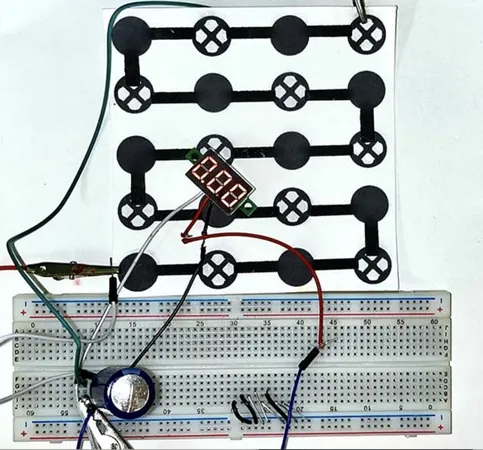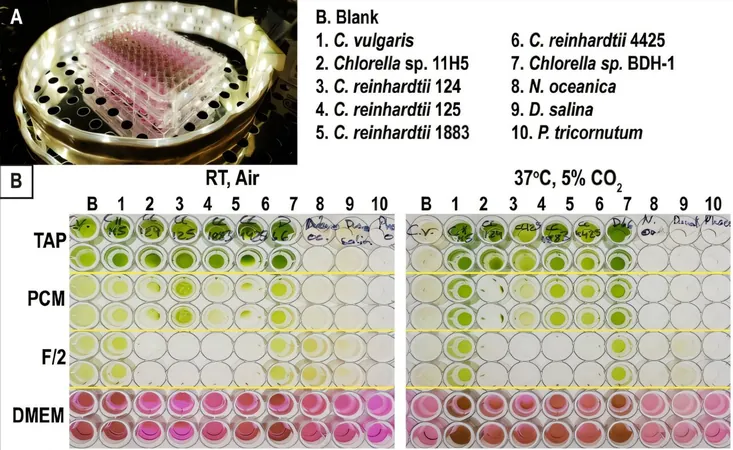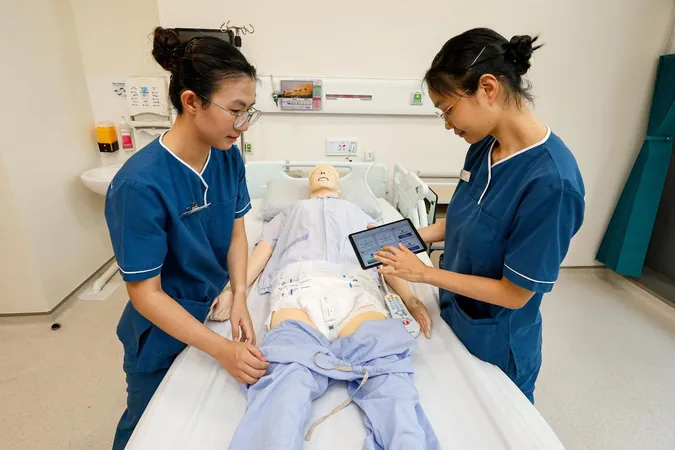
Revolutionary Paper-Based Technology Harvests Energy from Air for Disposable Sensors!
2024-11-11
Author: Wei Ling
Groundbreaking Development at Binghamton University
Researchers from Binghamton University in New York have introduced an innovative paper-based energy harvesting technology that converts moisture from the air into usable power for disposable sensors. This remarkable advancement utilizes a unique 'papertronic' power cell designed at the Bioelectronics and Microsystems Lab.
Mechanism of Energy Generation
The heart of this technology lies in a bacterial spore system, which creates an electric charge by establishing a gradient of positive ions. Specifically, the spores construct a layered effect with more positive ions on the top than on the bottom, while an asymmetric electrode captures these ions for energy production. These combined efforts result in a sustainable power source, capable of running sensors and even small displays.
Innovative Design Features
The design employs a Janus paper layer that has dual properties: hydrophobic on one side and hydrophilic on the other. This clever construction draws in moisture and traps it internally, ensuring a consistent energy supply from atmospheric humidity. By leveraging such a low-cost, flexible substrate like paper, this technology not only promises efficiency but is also environmentally friendly.
Performance Testing and Results
Testing of the spore-based generator, conducted at varying temperatures, revealed that at an optimal 37 °C, it could produce a consistent voltage output of 0.45 volts for over 2000 minutes. While figures did dip at lower temperatures, the device still demonstrated impressive voltage generation capabilities under challenging conditions.
Strength Compared to Traditional Systems
This 'moisture-electric' generator has proven exceptionally potent, delivering 0.5 µW/cm² – a performance five times better than traditional biofilm systems. Remarkably, it maintains a short-circuit current of about 2.5 µA even at higher humidity levels, and still achieves around 1.6 µA under relatively dry conditions (20% relative humidity). Such versatility indicates its potential to power small electronic devices effectively.
Scalability and Real-World Applications
The researchers have also demonstrated the device's scalability. By arranging multiple units in series, the power output significantly increases; two devices can produce 1.2 volts at 90% relative humidity, while six can achieve 2.7 volts. A configuration of 20 devices has even been tested successfully to charge a 470nF supercapacitor and power a liquid-crystal display (LCD), showcasing its real-world applicability.
Future Aspirations and Innovations
Professor Seokheun "Sean" Choi, head of the research lab, emphasizes the advantages of harvesting energy from the ubiquitous moisture in our atmosphere. He believes this approach can be more reliable than existing, sporadic energy-harvesting techniques currently available, with a vision for future enhancements including improved power density, streamlined energy storage methods, and minimizing device size to be comparable with micro-electromechanical systems (MEMS).
Refining Technology for Wearable Use
Choi's aspiration includes refining the technology further, using innovative methods like origami in the design of these paper devices. His ultimate goal is the creation of lightweight and compact disposable electronics that can be utilized for short durations, providing both convenience and functionality without the burden of long-term use.
Conclusion and Implications
As this remarkable research progresses, the implications for the field of wearable technology and disposable sensors are indeed promising, signaling a future where energy harvesting could be as commonplace as the air we breathe!


 Brasil (PT)
Brasil (PT)
 Canada (EN)
Canada (EN)
 Chile (ES)
Chile (ES)
 Česko (CS)
Česko (CS)
 대한민국 (KO)
대한민국 (KO)
 España (ES)
España (ES)
 France (FR)
France (FR)
 Hong Kong (EN)
Hong Kong (EN)
 Italia (IT)
Italia (IT)
 日本 (JA)
日本 (JA)
 Magyarország (HU)
Magyarország (HU)
 Norge (NO)
Norge (NO)
 Polska (PL)
Polska (PL)
 Schweiz (DE)
Schweiz (DE)
 Singapore (EN)
Singapore (EN)
 Sverige (SV)
Sverige (SV)
 Suomi (FI)
Suomi (FI)
 Türkiye (TR)
Türkiye (TR)
 الإمارات العربية المتحدة (AR)
الإمارات العربية المتحدة (AR)